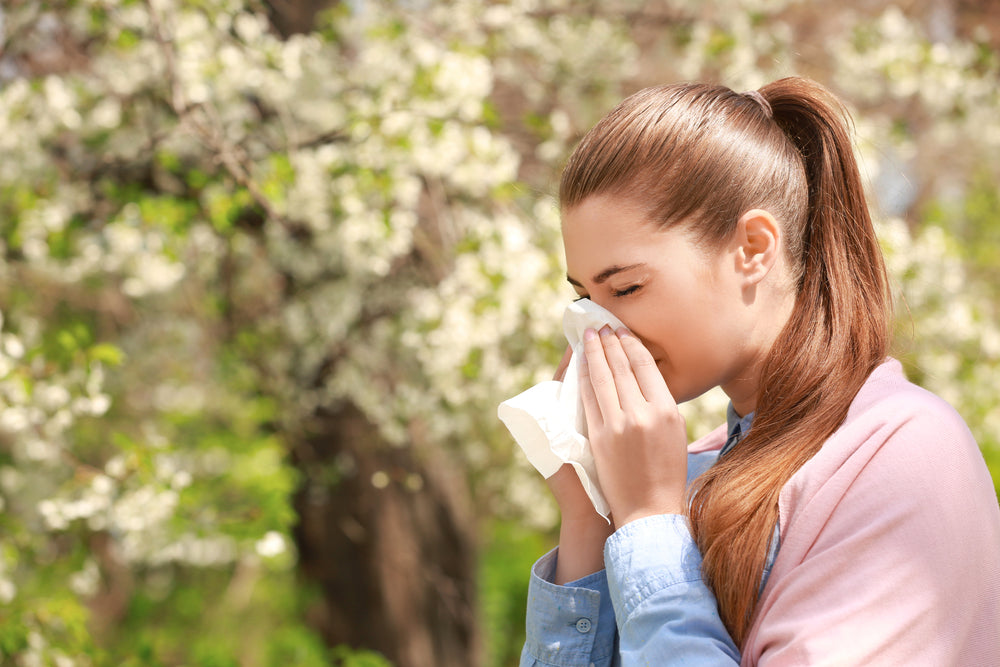Free U.S. Shipping On Orders Over $150

Summer Allergies: Most Common Allergens and How to Combat Them
Posted on
We often associate allergies with spring, but summer has its fair share of them as well. From mold to weed pollen, there’s plenty in the air that could leave you sneezing, stuffy and itchy. Here are the most common sources of summer allergies plus tips on how to protect yourself inside your home and outdoors.
Mold Spores
Mold is mostly dormant in the winter. As temperatures tick upwards in summer, the air also becomes more humid. The combination of warmth and moisture creates the perfect environment for mold to grow and spread. This continues into summer, particularly in places that get hot and humid weather.
Mold can thrive unseen in dark damp corners of your home. As it releases mold spores into the air, you get all these allergy symptoms without realizing what’s causing them.
The most important step in preventing mold allergies is controlling the humidity in your home. The EPA recommends an indoor humidity range of between 30% and 50%. Not only does this discourage mold growth, it also keeps your home feeling comfortable.
Don't forget to check for leaks, moisture from appliances such as a clothes dryer and other moisture problems in your home that can cause mold.
Mold spores can also affect you when you are outdoors. Unfortunately, there’s little you can do to control mold growth outside. The best option, if you are sensitive or allergic to mold, is to protect yourself by wearing a mask. We recommend the high-performance and anti-acne Hercleon Aplu mask.
Dust Mites
Similar to mold, dust mites thrive in warm and humid environments. So summer is peak dust mite allergy season.
The good news is that the same humidity control that works against mold spores, is also effective for dealing with dust mites. Keep your home between 30% and 50% and dust mite levels should drastically go down.
Dust mites feed on dead skin cells, so they are found mostly on your bed and furniture. Wash your bedding regularly, get a mattress protector and vacuum your sofas often.
Pollen
Pollen season begins in the spring. That’s when a lot of flowers bloom and produce pollen. Pollen is also a big problem in summer. Most of it comes from grasses and trees. In late summer, ragweeds are the biggest sources of pollen.
So throughout spring and summer, people who are sensitive or allergic to pollen are constantly dealing with one kind of pollen or another.
When you are outdoors, wearing a good quality mask will protect you from inhaling the tiny particles. In your home, the best protection is preventing the pollen from getting inside and keeping your home clean.
During peak pollen hours, usually morning to midday or early afternoon, keep windows and doors closed. Check your local pollen count forecast, since some types of pollen are released later in the day.
Dust and vacuum surfaces often and wash bedding regularly to prevent a build-up of pollen. Outdoor pets can also bring pollen inside, so groom them often and keep them from getting onto your bed or furniture when they are dirty.
If your pollen allergy is really bad, get a HEPA air purifier. It will capture any airborne pollen and other allergens such as dust mites and mold spores.
Insect Bites
You are likely spending more time outdoors this summer. That means more encounters with stinging and biting insects.
For most people, bug bites only cause mild discomfort. For others, it can cause swelling, itchiness, redness and rashes. If you are allergic to a particular insect like a bee or wasp, a bite or sting can cause anaphylaxis, a potentially fatal condition.
To protect yourself, cover most of your skin when outdoors, especially when in wooded areas. This means long sleeves, pants, socks and high boots. Don't forget to pack insect repellant as well as a first aid kit just in case you get stung.
If you know you are at risk of a severe allergic reaction, never go hiking, camping, fishing or any other outdoor activity alone. Always have someone with you just in case of an emergency. Just make sure they are also not allergic to insect stings.
Wildfire Smoke
Summer is peak wildfire season. Even if you are not close to a place that’s burning, smoke from a wildfire can travel thousands of miles and even get into your home.
Most people are just sensitive to smoke. You might feel a bit irritated in your throat and get a mild cough. But some people are allergic to smoke and can get a severe reaction. In that case, the best protection is a HEPA air purifier. And when you are outdoors, wear a mask.
Quick links
Contact
6063 Hudson Road #160
Woodbury, MN 55125
Yo@hercLeon.com
Leave a comment: